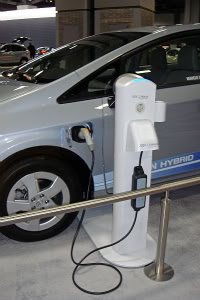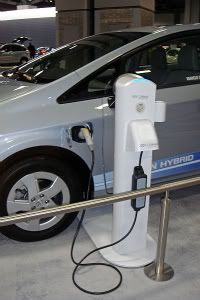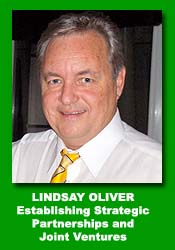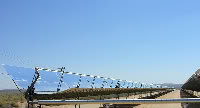[youtube http://www.youtube.com/watch?v=nmWqERLtNYU]
For those who might have missed it, here is April’s webinar, in which I present some of my perceptions about the electric transportation industry, including my take on the most probably EV adoption curve.
Our energy consumption is closely tied to GDP. If we’re not going agrarian, if we’re concerned about shortages in energy, food, and water, EVs are 100% necessary.
National security requires energy security, and that requires weaning ourselves off oil. And there are other imperatives: health, peak oil, urban congestion, global climate change, and ocean acidification
Electric vehicles use electric motors, and batteries, capacitors, and fuel-cells.
They encompass all vehicle form-factors.
There are 230 million cars on US roads. Trucks contribute even more GHGs and other forms of pollution. Nay-sayers point to drivers’ demand for absolute freedom, risk aversion, the unwillingness to pay extra, and confusion and apathy about true ecological benefits. Global climate change deniers represent a PR miracle.
There is a huge market for EVs. The management form PRTM and I predict 10% penetration by 2020 — a $250 billion market.
There are 25 million multi-car households in single-family dwellings, with at least one car used for local commuting.
There is lots of low-hanging fruit.
There are natural limits to the adoption of EVs, e.g., Class 8 trucks, and aircraft. This
provides a large market for things like synthetic fuels for the foreseeable future.
The EV adoption curve is complicated, as supply affects demand, and demand affects supply.
There is a huge divorce between Big Auto and Big Oil. How happy is Big Auto? Ultimately, it doesn’t matter.
EV adoption faces many challenges, primarily offering the consumer an effective value proposition.
Regarding consumer adoption, here are the results of a consumer survey. The #1 reason for consumers to buy EVs is to save on gas. To what degree is consumer behavior affected by concerns for the environment?
Are EVs only applicable to a certain lifestyle? Are electric vehicles not for everyone?
I’m not sure. What happened to video rentals and CD sales?
Another point to be considered re: consumer adoption is patriotism.
If you’re concerns by things like terrorism, war, nations debt, the loss of international respect, admiration, and most of all, leadership, the replacement of internal combustion engines with EVs may be an important step in the right direction.
Do you remember what George C. Scott as General Patton said? America loves a winner and will not tolerate a loser.
Regarding the adoption of EVs, infrastructure is an issue. We need to be prepared to expect bottlenecks. There will be 400 EVs sold in San Diego in April, all with 220V charging systems, and all requiring SDG&E inspection. Customers are expecting 3 – 5 business day turn-around – all of whom will be disappointed.
Let’s explore the shifting total cost of ownership. In the old model, we had gasoline, and heavy maintenance. In the new world, we have electricity and services.
Telematics includes green routing, realtime traffic, battery monitoring, charge locations, interior preconditioning, and V2G information.
Let’s talk about business strategy – including the notion of a few tough realities. Is Carlos Ghosn for real?
No one on the “hardware” side has an incentive to push for the migration to EVs.
The OEMs and the dealers wish it were 1955.
OEMs of specialty EVs (e.g., tractors) wanting to sell through traditional dealers should think twice.
Here are a few other notes re: EV business strategy — a few more tough realities. Only niche-market strategies offer protection for start-ups. Some examples include Tomberlin, Emcycle, and EcoVElectric.
Other include e-scooters, enclosed e-bikes, and tandems.
I’ve reviewed many incredible business plans from entrepreneurs in this space. Do you want to get involved?
If so, there are numerous peripheral markets, including electricity generation, Smart-grid components, two-way communication between energy source and consumer, efficiency of consumption, demand response, and V2G.
Other opportunities lie in services, e.g., telematics, and billing.
Regaring billing services, note that this subject is totally up in the air. Suppose I live in France but I work in Germany or Belgium. Or suppose I live in Santa Barbara but I’m visiting a friend in Los Angeles. How do I pay for my charge?
Other issues in billing services include the idea of pre-paying. This does not enable CRM, which is awkward and time-consuming for the customer,
You can opt for post-pay, which enables CRM, but there are credit risks, and the expenses incurred in billing and customer service.
In either case, an issue is integration. An example of this is Easy Pass.
The charger lies between the grid and the EV. There are half a dozen or so charger manufacturers that perform grid connect. load balancing, smart charge, and certified/authenticated charge.
More chargers mean happier drivers. But how much are they used?
Batteries are improving steadily. There is no magic bullet, but with scale, technology innovation, design standards, vertical integration (BYD), and the steady removal of cost from the supply chain, we should achieve $300/kWh.
Other charging solutions include
Better Place and fast-charging.
Charging, done at home and in semi-private locations (e.g., workplace) will account for 70%+ for at least the next 10 years.
What I see in the years 2011 – 2015 includes EV sales to early adopters, and to fleets, like FedEx, Verizon, Frito Lay. This will show the world that EVs are ready to go.
What I see I the years 2016 – 2020 include the pragmatists getting onboard, and real evidence of hockey-stick growth curve.
What I see in the years 2021 – 2030 is rapid and smooth EV adoption. This is because EV powertrains are pure technology. To what degree does Moore’s Law apply?
I think we need to keep our eyes on France because of their:
Clean power (so EVs make a real difference)
Top-down public sector backing in all aspects (especially charging infrastructure)
Aggressive investments from the private sector
Active solicitation of business relationships with partners worldwide
Sophisticated/enlightened citizenry that prides itself in leadership
Smaller footprint (less than 1/10th the size of the continental US)
We should expect s surprise announcement from Toyota because:
They will cease resting on the laurels of the Prius
Toyota’s current plans for the plug-in Prius are a yawn
Their drive train is the worst of all worlds
I expect to see a heightened interest in renewable energy because of the:
Gulf spill, Japan, and gas prices
People are waking up, realizing that we in the US :
Have no energy policy, much less a federal RPS (renewable portfolio standard).
Offer only lip service in COP meetings like Copenhagen and Cancun.
Subsidize oil and coal at 12 times the rate we do renewables.
Heightened Interest in Renewable Energy
Scrupulously ignore the numerous externalities of fossil fuels
Feign concern about the national debt we’re leaving to our children
Act like we’re concerned about unemployment
Warmly embrace the behavior of an oil industry that employs 7000 lobbyists whose job is to extract favors
In the 2012 presidential election, every credible candidate will have a sane and workable position on the subject. Most will be disingenuous.
We won’t have a true democracy as long as Citizen’s United vs. FEC is in place
See www.MoveToAmend.org


![[The Vector] The Department of Energy Weighs In](https://www.2greenenergy.com/wp-content/uploads/2011/04/capitol-courtesy-dreamstime.jpg)





 I haven’t spent too much time covering the many progressive/activist groups in the renewable energy space. But it’s worth noting that
I haven’t spent too much time covering the many progressive/activist groups in the renewable energy space. But it’s worth noting that 
 I’m in New York City for a few days, and I’ve scheduled my lunch today with Belen Gallego, the Director of CSP Today (Concentrated Solar Power, aka solar thermal). When I interviewed Belen for my “
I’m in New York City for a few days, and I’ve scheduled my lunch today with Belen Gallego, the Director of CSP Today (Concentrated Solar Power, aka solar thermal). When I interviewed Belen for my “